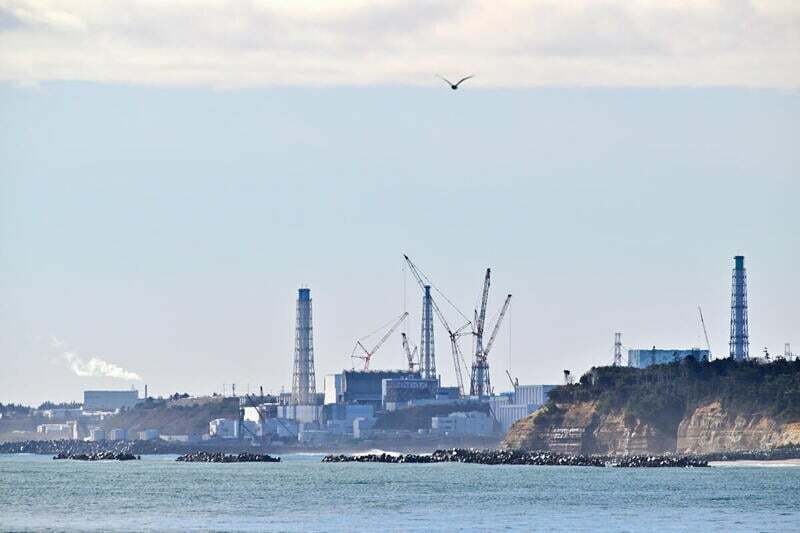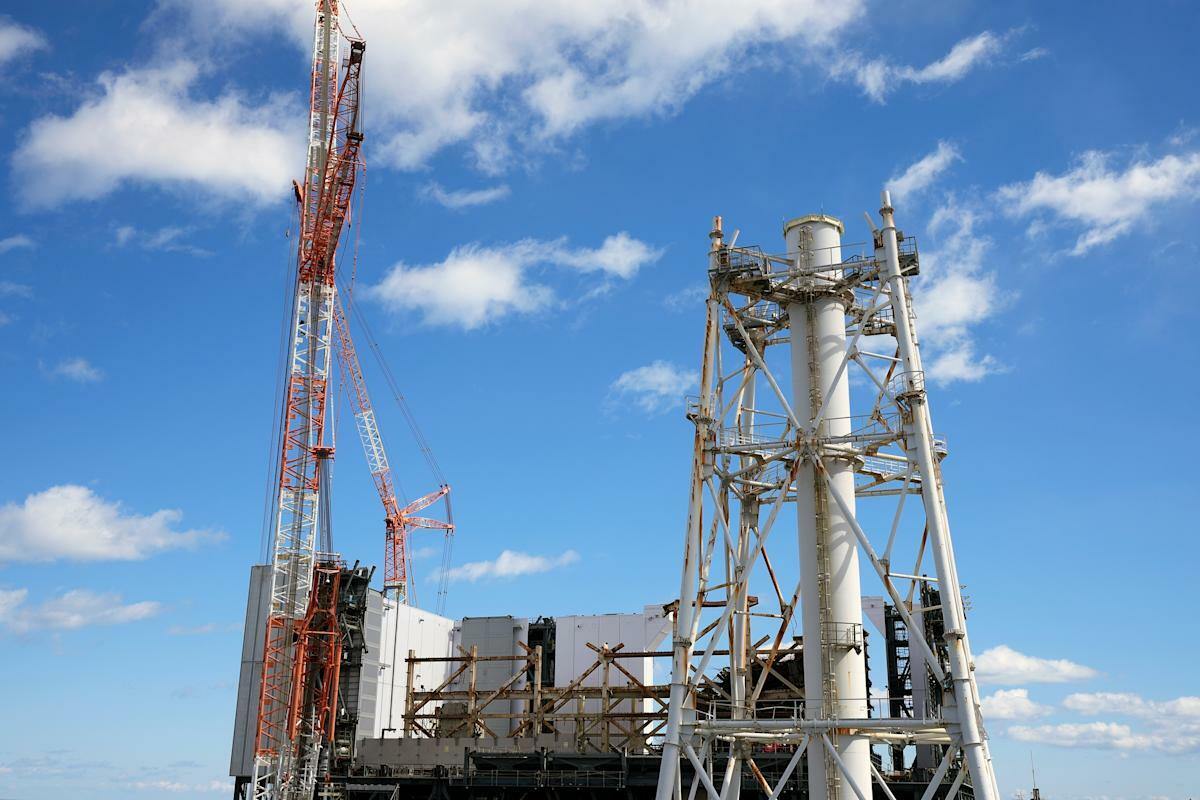#nomorefukushimas
#FirstVoicesRadio Host #TiokasinGhosthorse, Cheyenne River #Lakota, Welcomes #LeonaMorgan, #Diné, '#HaulNo!'
By First Voices Radio, March 9, 2025
Kingston, NY: "This week’s program was inspired by 'Flagstaff ‘NO!’ To Radioactive Trucks', an article by our friend #BrendaNorrell in #CensoredNews on February 10, 2025. Returning guest Leona Morgan (Diné) is an #Indigenous organizer who has been fighting #NuclearColonialism since 2007. She is a cofounder of Haul No!, a campaign to stop a #UraniumMine near the #GrandCanyon and transport thru #NavajoNation. Recently, Leona helped to halt #Holtec in #NewMexico. Leona is also pursuing a Master of Community and Regional Planning at the University of
New Mexico in Albuquerque, New Mexico."
Read more:
https://bsnorrell.blogspot.com/2025/03/first-voices-radio-tiokasins-guest-is.html
'Flagstaff ‘NO!’ To Radioactive Trucks', February 10, 2025: https://bit.ly/3F8Tzb5.
For more information, visit these websites: https://haulno.com/, https://www.genderandradiation.org/
and https://radioactivewastecoalition.org
#HaulNo #NoMoreFukushimas #NoMoreChernobyls #FourCornersToFukushima #NoNukes #NuclearWeapons #NuclearWaste #FukushimaIsntOver #RethinkNotRestart #WaterIsLife #StopNucléaire #Nucléaire #EnergiesRenouvelables #AntiAtom #NoNukes #NuclearIsNotCarbonFree #AtomkraftNeinDanke #PinyonPlain #WhiteMesaMill #NoUraniumMining #DefendTheSacred #WaterIsLife #AirIsLife #ShutDownPinyonPlain #NoMiningWithoutConsent
#ReaderSupportedNews #DontNukeTheGrandCanyon #DontNukeThePlanet #WeAreTheFuture
#UteNation
#TucsanArizona! TODAY! March 11, 2025!
Group plans protest at Tucson Electric after utilities propose new nuclear plant
"With a new nuclear reactor in #Arizona now a possibility, a grassroots group is planning a protest in #Tucson on the 14th anniversary of the start of the #Fukushima accident in Japan.
"The #NuclearResister, which bills itself as an educational group opposed to nuclear power and weapons, said it plans to hold a curbside press conference and demonstration at 12:15 p.m. Tuesday in front of the downtown headquarters of #TucsonElectricPower near Broadway Road and Sixth Avenue. The group advocates for a '#NuclearFreeFuture' with nonviolent #protests and other actions."
Read more:
https://www.msn.com/en-us/public-safety-and-emergencies/health-and-safety-alerts/group-plans-protest-at-tucson-electric-after-utilities-propose-new-nuclear-plant/ar-AA1ABW1G
#FukushimaIsntOver #RethinkNotRestart #WaterIsLife #NoMoreFukushimas #NoMoreChernobyls #StopNucléaire #Nucléaire #EnergiesRenouvelables #AntiAtom #NoNukes #NuclearIsNotCarbonFree #Nucleaire #AtomkraftNeinDanke #Anniversaire311
14 years since #Fukushima #nuclear disaster: #Greenpeace statement
March 11, 2025
Tokyo, Japan – "14 years have passed since the #GreatEastJapanEarthquake and the #FukushimaDaiichi nuclear #disaster devastated the northeast region of Japan. #GreenpeaceJapan extends heartfelt condolences to the victims and their families who are still suffering the aftermath of this devastating catastrophe."
Read more:
https://www.greenpeace.org/international/press-release/73383/14-years-since-fukushima-nuclear-disaster-greenpeace-statement/
#FukushimaIsntOver #RethinkNotRestart #WaterIsLife #NoMoreFukushimas #NoMoreChernobyls #Tohuku #Earthquake #StopNucléaire #Nucléaire #EnergiesRenouvelables #AntiAtom #NoNukes #NuclearIsNotCarbonFree #Nucleaire #AtomkraftNeinDanke #Anniversaire311

'Nervous and rushed': Massive #Fukushima plant cleanup exposes workers to high radiation and stress
by MARI YAMAGUCHI
Mon, March 10, 2025 at 10:01 PM EDT
OKUMA, Japan (AP) — "The #FukushimaDaiichi #NuclearPower plant's radiation levels have significantly dropped since the cataclysmic meltdown 14 years ago Tuesday. Workers walk around in many areas wearing only surgical masks and regular clothes.
"It's a different story for those who enter the reactor buildings, including the three damaged in the 2011 earthquake and tsunami. They must use maximum protection — full facemasks with filters, multi-layered gloves and socks, shoe covers, hooded hazmat coveralls and a waterproof jacket, and a helmet.
"As workers remove melted fuel debris from the reactors in a monumental nuclear cleanup effort that could take more than a century, they are facing both huge amounts of psychological stress and dangerous levels of radiation."
Read more:
https://www.yahoo.com/news/nervous-rushed-massive-fukushima-plant-020146511.html
#FukushimaIsntOver #RethinkNotRestart #WaterIsLife #NoMoreFukushimas #NoMoreChernobyls #Tohuku #Earthquake #StopNucléaire #Nucléaire #EnergiesRenouvelables #AntiAtom #NoNukes #NuclearIsNotCarbonFree #Nucleaire #AtomkraftNeinDanke #Anniversaire311

HT @NVL311
‘An act of betrayal’: Japan to maximise nuclear power 14 years after Fukushima disaster
https://www.theguardian.com/world/2025/feb
#RethinkNotRestart #NoMoreFukushimas #TEPCOLies #KEPCOLies #NoNukes
Since the 2011 #Fukushima accident, Japan has restarted 14 #NuclearReactors
1/10/2025
"Japanese utilities restarted two additional nuclear reactors in 2024 that had been suspended from operations in response to the 2011 #FukushimaDaiichi accident, taking the total number of restarted reactors to 14 since the accident.
"In November, #TohokuElectricPowerCo. restarted its 796-megawatt (MW) #Onagawa Unit 2 reactor, and in December #ChugokuElectricPowerCo. restarted its #Shimane Unit 2 (789 MW). Onagawa is the nuclear power plant located closest to the epicenter of the March 2011 #earthquake and tsunami.
"Most of the restarted reactors have been pressurized water reactors (PWR) located in western Japan. Onagawa Unit 2 and Shimane Unit 2, by contrast, are the first boiling water reactors (BWR) to be restarted. Onagawa Unit 2 is also the first reactor in the eastern part of the country to be restarted. Japan’s nuclear regulator prioritized the restart of PWRs due to public safety concerns regarding BWR technology, which is the design of the Fukushima Daiichi units.
"Japan suspended its nuclear fleet from 2013 to 2015 for mandatory safety checks and upgrades following the 2011 Fukushima Daiichi accident. Before the accident, 54 commercial nuclear reactors were operating in Japan, and nuclear power accounted for approximately 30% of the country’s electricity generation. Nuclear restarts have proceeded slowly since the first two units (#Sendai Units 1 and 2) were restarted in 2015. Restarts have been slow due to a significantly more stringent safety inspection and authorization process established after the accident and local court injunctions emerging from ongoing public safety concerns in some regions. Public support for restarts has been growing in Japan recently, however.
"Under the current restart process, once regulatory approvals have been granted, the local municipality and prefectural governments are consulted prior to restart. In addition to the 14 reactors already restarted, three more units (namely, the #KashiwazakiKariwa Unit 6 and Unit 7 and the #TokaiDaini unit) have received regulatory approval to restart but have yet to do so. Tohoku Electric Power announced in 2018 that Onagawa Unit 1 would be decommissioned rather than upgraded, but the utility plans to seek approval to restart Onagawa Unit 3. Restarting another 10 units is under regulatory review.
"The suspension of Japan's nuclear fleet after the Fukushima accident significantly increased dependence on natural gas, oil, and coal imports to make up for lost domestic nuclear generation. It also significantly increased the installed capacity of solar photovoltaic generation in the country, according to data from Japan’s Ministry of Economy, Trade and Industry. Japan has limited domestic fossil fuel resources and imports virtually all the fossil fuels it uses. Consequently, Japan is the world's second-largest importer of liquefied natural gas (LNG) after China and the third-largest importer of coal.
"As part of Japan’s sixth long-term energy plan, last updated in October 2021, the central government called for the nuclear share of the country’s electricity generation to reach 20%–22% by 2030. Nuclear power accounted for about 6% of Japan’s electricity generation in 2023. A draft of Japan’s seventh long-term energy plan was released on December 17, 2024, and says nuclear power should account for 20% of Japan’s energy supply in 2040.
"Japan’s current policy intends to maximize the use of existing reactors by restarting as many units as possible and extending the #LicensedOperatingLife beyond the current 60-year limit."
Source:
http://gasprocessingnews.com/news/2025/01/since-the-2011-fukushima-accident-japan-has-restarted-14-nuclear-reactors/
#NoNukesForAI #RenewablesNow #RethinkNotRestart #NoMoreFukushimas #TEPCOLies #KEPCOLies #NoNukes #NuclearPlants #NuclearPowerCorruptionAndLies
And before you dismiss #YoichiShimatsu as a crackpot, please look into his history as an investigative journalist -- who are often the targets of governments and industries who have a lot to hide!
The #Fukushima Disaster, The Hidden Side of the Story
Wednesday, July 05, 2023
by Karl Grossman
"Yoichi Shimatsu, a former Japan Times journalist, appears in the film and speaks of 'the cruelty, the cynicism of this government.' He speaks of how in the accident’s aftermath, 'nearly every member of Parliament and leaders of the major political parties' along with #corporate executives, 'moved their relatives out of Japan.'"

So, it seems the #SeabrookNuclearPlant survived the recent storms without incident, but if there was a problem, there is NO WAY nearby residents would have been able to evacuate. I came across this letter to the #NRC from the group #NoMoreFukushimas expressing their concerns about #ClimateChange and #NuclearPlants in 2012!
Concerns regarding the #SeabrookStation
No More Fukushimas letter to the NRC.
The Honorable Allison M. Macfarlane, Chair
Nuclear Regulatory Commission
11555 Rockville Pike
Rockville, MD 20852
November 8, 2012
Dear Chairwoman Macfarlane:
We appreciated receiving a Nuclear Regulatory Commission (NRC) response to the August 28, 2012, letter that we sent to the NRC concerning Seabrook Station relicensing. The NRC's response (October 17, 2012) came from Dennis Morey, Chief, Project Manager 1, Projects Branch Division of License Renewal, Office of Nuclear Reactor Regulation (Docket No. 50-443).
In our letter, we highlighted a concern openly discussed NRC meeting April 26, 2012, on Seabrook relicensing held in Hampton, New Hampshire. Data indicates that due to climate change there could be an increase in #SeaLevels and storm surges that would affect the Seabrook plant. Obviously, the flooding of the Seabrook plant campus should be a cause for concern, especially since it the flooding is projected to occur within the timeframe of the relicensing period, 2030-2050.
In his response to our letter, Mr. Morey categorically rejected the idea that this rising sea level information was of any relevance to the relicensing of the Seabrook plant:
"Regarding your concerns about the current design-basis flood level calculations.... please note that these issues are not part of the NRC's review of a license renewal application. A license renewal review is not a re-review of the facility licensing basis; rather, it is focused on managing
the age-related degradation of passive systems, structures, and components to ensure they will fulfill their safety-related functions, as specified in the current licensing basis.
"The NRC has multiple processes to evaluate the adequacy of current plant operations and licensing bases. Should the NRC become aware at any time of information calling into question the continued safe operation of any nuclear power plant, including Seabrook Station, the NRC will take the appropriate actions as part of the agency's ongoing safety oversight, regardless of
whether those plants have sought or are seeking a renewed license."
In the twists and turns of bureaucratic thinking, Mr. Morey may be technically correct that climate-
change-related flooding is not an "age-related" deterioration artifact. But, Mr. Morey seems to brush off the fact that new global climate conditions could completely reconfigure the safety profile of the plant. We believe that whether or not climate-change-related flooding falls within "design-basis flood calculations" is a hairsplitting issue for bureaucrats. However, for those of who live near the plant it's a major safety issue. Therefore, if necessary, we respectfully recommend that NRC modify its relicensing concerns to include global climate change/rising sea levels in its license renewal framework.
Furthermore, Mr. Morey must know that the NRC has identified "alkali-silica reaction (ASR)" as a potential long-term threat to the reliability of the Seabrook plant and that structural degradation due to
#ASR is currently under the NRC's relicensing review. The flooding water will obviously raise levels of saltwater saturation, which will accelerate concrete degradation so, on that basis alone, the flooding should be within the Seabrook relicensing purview.
Finally, since Mr. Morey did not identify the steps the NRC plans to take to address flooding at the Seabrook plant, we surmise that the NRC does not consider flooding due to sea-level rise to be a problem. Our concern has escalated since researchers at the Shorenstein Asia-Pacific Research Center at Stanford University in an October 31, 2012, piece in the Washington Post reported that they had conducted a study that assessed the vulnerability of #NuclearPlants flooding around the world.
The Stanford researchers collected information on plant height, #SeaWall height and the location of emergency power generators for 89 nuclear plants that lie next to water. They compared this to
historical information on high waves triggered by various sources, such as #earthquakes, #landslides and #hurricanes. The study found that the U.S. plants most vulnerable to inundation are the Salem and #HopeCreek plants on the New Jersey / #Delaware border; the #Millstone plant in Connecticut; and the Seabrook plant in New Hampshire (italics added). We strongly urge you to contact the researchers and obtain this invaluable information from them directly.
That said, we ask the NRC-as we did in our August letter-to review the risk that rising sea levels, #StormSurges or increased groundwater saturation of concrete poses to residents who live in the vicinity of the Seabrook nuclear power plant. As we have stated, we believe it is entirely appropriate to do so within the purview of the license renewal process. But, in the spirit of public safety, which we believe should be paramount-we urge the NRC to use whatever regulatory tools are needed to investigate this critical issue.
Sincerely yours,
Bruce Skud and Joanna Hammond
Co-founders, No More Fukushimas!
